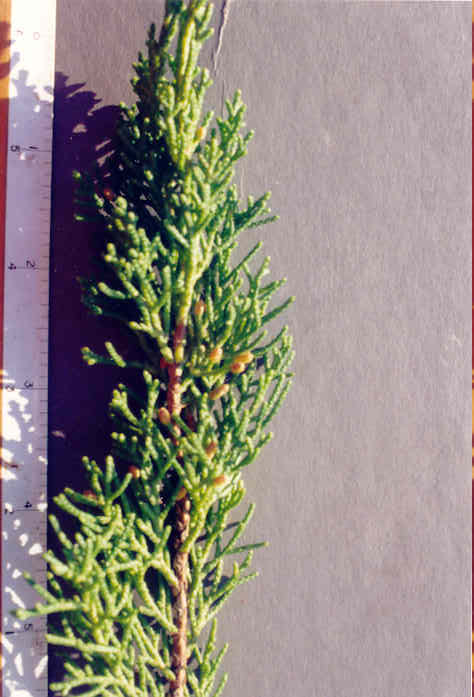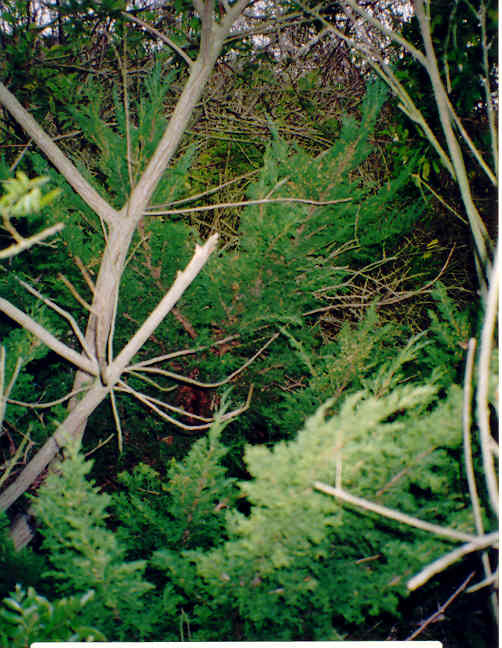
Cypress Family
North America
Red Cedar
 |
Juniperus virginiana var. kosteri
Beissn.
Cypress Family North America Red Cedar |
February Photo
Plant Characteristics:
Dioecious shrub to several feet tall, lower branches ascending or arching
outward, broader than tall; lvs. of two types, the juvenile needle-like,
opposite 3-6 mm. long, the adult scale-like, opposite, acute, and appressed,
about 2 mm. long; staminate cones
terminal, 3-3.5 mm. long, ovoid; fr. blue-black, glaucous, 3-6 mm. long, 1-3
seeded.
Habitat:
Escape from cultivation.
Name:
Junip-erus, ancient classical
name. (Munz, Flora So. Calif. 36). Kosteri
the species, refers to a person because it is capitalized in Bailey, but I
find no reference to a person with a similar name in either Bailey, Manual of
Cultivate Plants or Bailey, Hortus Third.
(my comments).
General:
Rare in the study area with only one plant known, this at marsh level,
below the intersection of Back Bay Dr. with Eastbluff Dr. The plant grows under
a large Brazilian pepper tree. There
are a number of varieties of Juniperus;
many of these are described by the shape of the plant.
Until the plant grew out from under the skirt of the pepper tree I was
not sure of its shape. Now in 2004 it has emerged and I have determined its identity
from its acute scale-like leaves and shape. As it turned out, the shape of the
plant beneath the tree is the same as the growth that has emerged from beneath
the tree. My specimen is a
staminate plant and the fruit description is from Bailey. (my comments).
Junipers are the most widely used woody plants in the West.
There's a form for almost every landscape use.
Western nurserymen offer more than a hundred names.
(Sunset Editors, New Western Garden Book 1984. p 339).
About 60 species of the Northern Hemisphere.
(Munz, Flora So. Calif. 36).
Text Ref:
Bailey 126; Munz, Flora So. Calif.
36; Sunset Editors, New Western Garden Book 1984. p. 339.
Photo Ref:
Mar 98 # 3; Feb-May 98 # 8A; May-June 04 # 16.
Identity: species name by
R. De Ruff, variety by John Johnson.
First Found:
March 1998.
Computer Ref: Plant Data 508.
No plant specimen.
Last edit 8/16/04.
 |